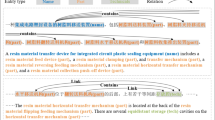Abstract
The knowledge graph completion task involves predicting missing entities and relations in a knowledge graph. Many models have achieved good results, but they have become increasingly complex. In this study, we propose a simple translation-based model that relies on the fact that the multiplication of subjects and relations is approximately equal to the object. First, we utilize embeddings to represent entities and relations. Second, we perform vector multiplication on subject embedding and relation embedding to generate a 2D matrix and achieve full fusion of embedding at the element level. Third, we adopt a convolutional neural network on the 2D matrix. Thereafter, we can generate feature maps, which are then spliced into a 1D feature vector. The feature vector is transformed into predicted object embedding through a fully connected operation. Finally, we use the scoring function to score the candidate triples. Experimental results strongly demonstrate that the translation knowledge graph completion model based on 2D convolution achieves state-of-the-art results compared with the baseline.




Similar content being viewed by others
References
Balažević I, Allen C, Hospedales TM (2019) Hypernetwork knowledge graph embeddings. In: International conference on artificial neural networks. Springer, pp 553– 565
Bansal T, Juan DC, Ravi S, McCallum A (2019) A2n: attending to neighbors for knowledge graph inference. In: Proceedings of the 57th annual meeting of the association for computational linguistics, pp 4387–4392
Bordes A, Usunier N, Garcia-Duran A, Weston J, Yakhnenko O (2013) Translating embeddings for modeling multi-relational data. In: Advances in neural information processing systems, pp 2787–2795
Das R, Dhuliawala S, Zaheer M, Vilnis L, Durugkar I, Krishnamurthy A, Smola A, McCallum A (2017) Go for a walk and arrive at the answer: Reasoning over paths in knowledge bases using reinforcement learning. In: International conference on learning representations
Dettmers T, Minervini P, Stenetorp P, Riedel S (2018) Convolutional 2d knowledge graph embeddings. In: Proceedings of the AAAI conference on artificial intelligence, vol 32
Dong X, Gabrilovich E, Heitz G, Horn W, Lao N, Murphy K, Strohmann T, Sun S, Zhang W (2014) Knowledge vault: a web-scale approach to probabilistic knowledge fusion. In: Proceedings of the 20th ACM SIGKDD international conference on Knowledge discovery and data mining, pp 601–610
Ioffe S, Szegedy C (2015) Batch normalization: Accelerating deep network training by reducing internal covariate shift. In: Proceedings of the 32nd international conference on machine learning, pp 448–456
Ji G, He S, Xu L, Liu K, Zhao J (2015) Knowledge graph embedding via dynamic mapping matrix. In: Proceedings of the 53rd annual meeting of the association for computational linguistics and the 7th international joint conference on natural language processing (volume 1: Long papers), pp 687–696
Kazemi SM, Poole D (2018) Simple embedding for link prediction in knowledge graphs. In: Advances in neural information processing systems, pp 4284–4295
Kingma DP, Ba J (2015) Adam: a method for stochastic optimization. In: International conference on learning representations
Kok S, Domingos P (2007) Statistical predicate invention. pp 433–440
Lin Y, Liu Z, Sun M, Liu Y, Zhu X (2015) Learning entity and relation embeddings for knowledge graph completion
Mouromtsev D, Wohlgenannt G, Haase P, Pavlov D, Emelyanov Y, Morozov A (2018) A diagrammatic approach for visual question answering over knowledge graphs. In: European semantic web conference. Springer, pp 34–39
Nguyen TD, Nguyen DQ, Phung D et al (2018) A novel embedding model for knowledge base completion based on convolutional neural network. In: Proceedings of the 2018 conference of the North American chapter of the association for computational linguistics: human language technologies, Volume 2 (Short Papers), pp 327–333
Nickel M, Tresp V, Kriegel HP (2011) A three-way model for collective learning on multi-relational data. In: Icml, vol 11, pp 809–816
Schlichtkrull M, Kipf TN, Bloem P, Van Den Berg R, Titov I, Welling M (2018) Modeling relational data with graph convolutional networks. In: European semantic web conference. Springer, pp 593–607
Sheng Y, Lan M (2019) Residual connection-based multi-step reasoning via commonsense knowledge for multiple choice machine reading comprehension. In: International conference on neural information processing. Springer, pp 340–352
Srivastava N, Hinton G, Krizhevsky A, Sutskever I, Salakhutdinov R (2014) Dropout: a simple way to prevent neural networks from overfitting. J Mach Learn Res 15(1):1929–1958
Szegedy C, Vanhoucke V, Ioffe S, Shlens J, Wojna Z (2016) Rethinking the inception architecture for computer vision. In: Proceedings of the IEEE conference on computer vision and pattern recognition, pp 2818–2826
Toutanova K, Chen D (2015) Observed versus latent features for knowledge base and text inference. In: Proceedings of the 3rd workshop on continuous vector space models and their compositionality, pp 57–66
Trouillon T, Dance CR, Gaussier É, Welbl J, Riedel S, Bouchard G (2017) Knowledge graph completion via complex tensor factorization. J Mach Learn Res 18(1):4735–4772
Yang B, Yih SWT, He X, Gao J, Deng L (2015) Embedding entities and relations for learning and inference in knowledge bases. In: Proceedings of the international conference on learning representations
Zhang W, Paudel B, Zhang W, Bernstein A, Chen H (2019) Interaction embeddings for prediction and explanation in knowledge graphs. In: Proceedings of the twelfth ACM international conference on web search and data mining, pp 96–104
Acknowledgements
This work is supported by the National Natural Science Foundation of China (61602401), Scientific and technological research projects of colleges and universities in Hebei Province (QN2018074), Scientific and technological research projects of colleges and universities in Hebei Province (ZD2019004) and the Nature Scientist Fundation of Hebei Province (F2019203157).
Author information
Authors and Affiliations
Corresponding author
Additional information
Publisher’s note
Springer Nature remains neutral with regard to jurisdictional claims in published maps and institutional affiliations.
Rights and permissions
About this article
Cite this article
Feng, J., Wei, Q., Cui, J. et al. Novel translation knowledge graph completion model based on 2D convolution. Appl Intell 52, 3266–3275 (2022). https://doi.org/10.1007/s10489-021-02438-8
Accepted:
Published:
Issue Date:
DOI: https://doi.org/10.1007/s10489-021-02438-8




